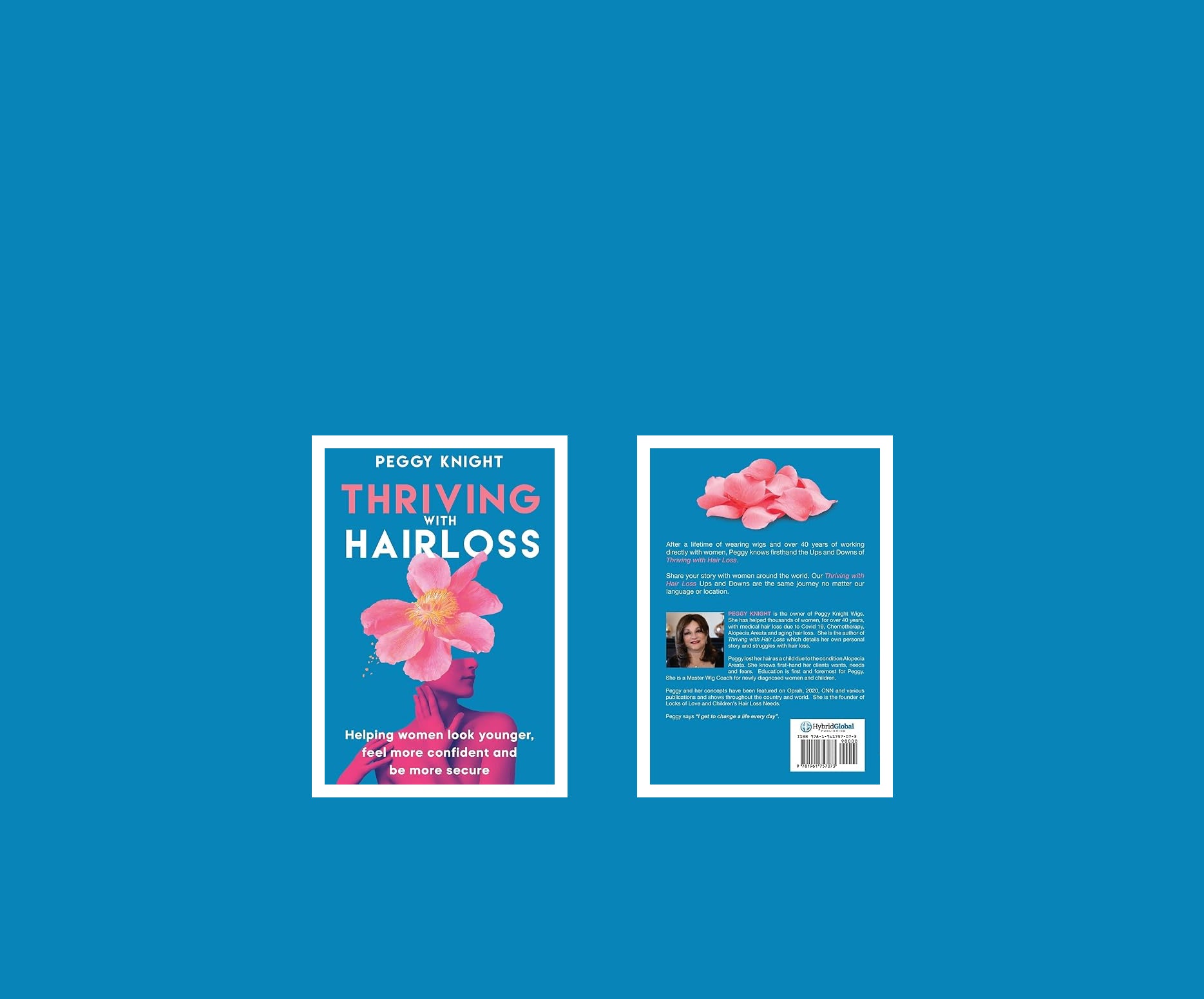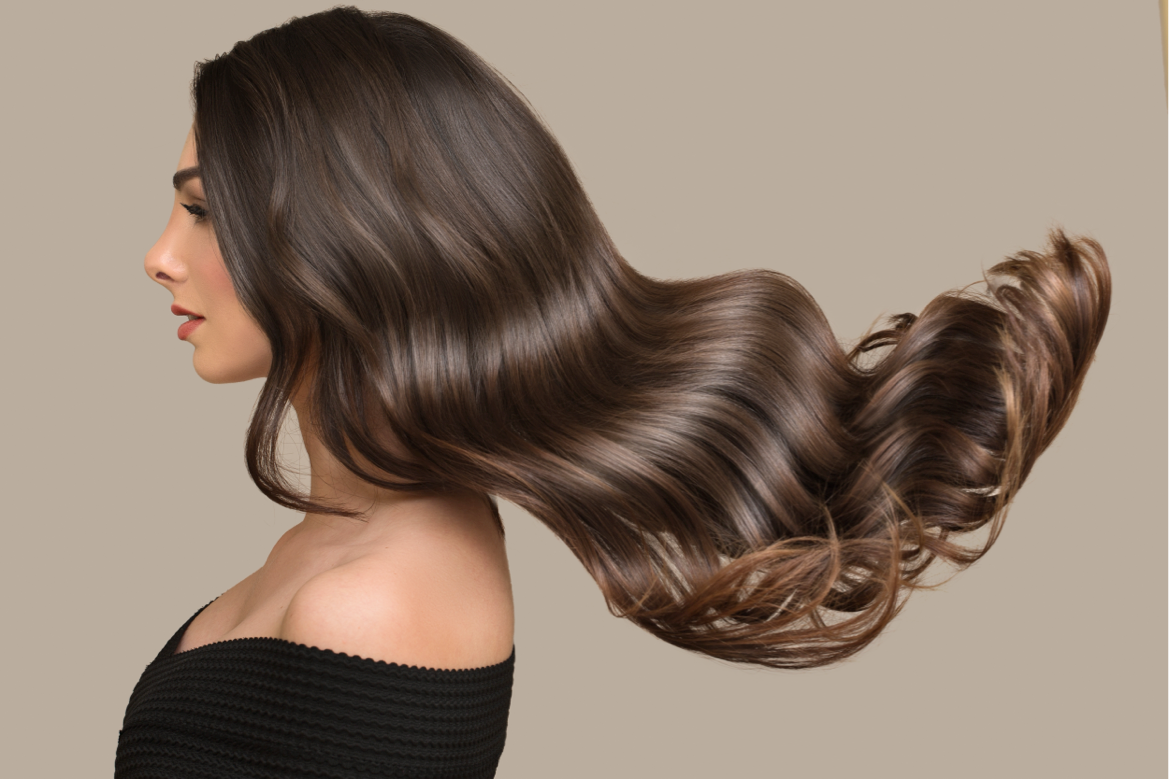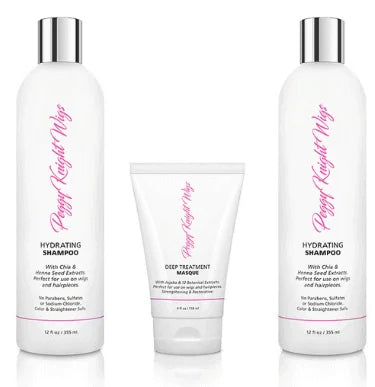Browse Our Wigs

Schedule a Private Consultation
I'm excited to show you the outstanding quality of my Peggy's Choice Collection. Since many of my consultants are also delighted customers, you'll get to see the full range of Peggy's Choice Wigs and Human Hair Wig Toppers in action.
Don't miss this opportunity—schedule a time to speak with me personally and explore all your options. As a special bonus, you'll receive a complimentary hair clip when you book your consultation.
Take the first step toward enhancing your style and confidence—schedule your free consultation now!
More Products & Accessories
Testimonials
Angela G.
I was age 14 when my mother first noticed a bald spot. We have always been thankful for the solutions Peggy offered us. Love my hair!
Mary L.
The process was easy as pie. She met with me personally to determine the right fit, color and length. And she was always available when we needed her.
Makela R.
When diagnosed with breast cancer my biggest fear was the loss of my hair. Peggy helped me along the way. She even met me at the salon and stayed during my styling appointment.
Sally P.
Peggy told me about her own hair loss experienced. This put me at ease right away. She not only is educated about hair and loss but she lived it herself.

THRIVING WITH HAIRLOSS
A BOOK by PEGGY KNIGHT
Helping women look younger, feel more confident and be more secure.

Schedule a free consultation
Still have questions? I'm here to help.
By scheduling a free consultation, you'll have the opportunity to speak with me directly. Whether you're curious about the best wig options for your needs, how to care for your new wig, or want personalized recommendations, I'm happy to answer all your questions. Let's work together to find the perfect solution that enhances your confidence and style.
Don't hesitate—reach out today and let's start this journey together.
FAQS
No matter which type of wig you choose, it’s a good idea to have a backup. Wigs need regular care and sometimes require repairs, so having a backup can be very handy.
All wigs require regular home care, which generally involves shampooing and conditioning on a weekly basis. Most wigs come with general care instructions that should be followed for optimal results.
Human hair wigs should be treated as though they were your real hair. It’s best to use salon-quality shampoos and conditioners because they are gentler on hair. If your hairpiece is colored or permed, use products specifically designed for colored and permed hair. A human hair wig can be washed in cool or warm water and may be dried naturally or blow-dried with the heat set to cool or low.
Synthetic wigs react to heat, so they should only be washed in cool water and allowed to dry naturally. After drying, the wig will return to its original style with a few gentle shakes. Hot water, hair dryers, and curling irons should never be used on a synthetic wig.
Human hair wigs can be styled daily, much like your real hair. However, care should be taken to avoid damaging the hair when using tools like curling irons. Human hair wigs can also be highlighted, colored, or permed by a professional stylist. Note that the processes for coloring and perming a wig require special training and should not be attempted at home. Keep in mind that a human hair wig will hold its color or perm for quite some time, since the hair does not grow out. However, the color will eventually oxidize or fade, and a perm will eventually relax, so these treatments will need to be repeated periodically.
Synthetic wigs cannot be highlighted or colored, and many cannot be restyled. Those that can—primarily the more expensive synthetic wigs that have been hand-tied—must be restyled by a professional.
Almost all wigs require periodic repairs to keep them looking fresh and natural. Some repairs take just a day or a week, while others may take two to three months.
As with any head of hair, a human hair wig will lose hair due to normal combing and brushing. Hair is often lost first along the part and at the crown. On many wigs, hair can be added back to these and other areas to maintain a natural appearance.
Human hair wigs may also need to have some cuticles removed from time to time. Each human hair shaft has 5 to 10 cuticle layers, which are arranged like shingles on a roof. Under normal circumstances, these cuticles lie flat, making the hair easy to brush. When human hair is permed or colored, the cuticles are opened and then closed again to complete the process. If the cuticles do not close properly, the top layer of cuticles may need to be removed before the hair regains its manageability. This is a simple process when handled by the manufacturer.
Hand-tied synthetic wigs may need to be steamed to eliminate frizz or be restyled. This steaming technique is complex, requires highly controlled temperatures, and should only be done by a trained styling professional.
Wig prices can vary dramatically, ranging from less than $100 to over $5,000, depending on the materials used and the manufacturing process. Insurance will sometimes cover all or a portion of the cost if the wig is considered a medical hair prosthesis prescribed by a doctor. Nonprofit organizations that assist people with medical hair loss often have information on how best to approach your insurer for reimbursement. Some of these organizations also have funds to help those in need purchase medical hair prostheses.
You might start by checking with nonprofit organizations and support groups that work with people experiencing medical hair loss, as they may have a list of recommended wig providers. Your dermatologist and hairstylist may also know of reputable providers. Once you have a specific provider in mind, consider checking with the Better Business Bureau to see if any complaints have been filed against them.
Peggy Knight Wigs LLC & Enhancement Accessories LLC.
T. 415-877-7004
Monday - Sunday
9am - 6pm

Collapsible rows
Medical conditions like Alopecia, Cancer, and other health-related challenges can be overwhelming, especially due to the hair loss and drastic alteration in your appearance. Your life changes completely, the way you look, the way people might notice and treat you. It deeply affects your confidence, but it doesn’t have to be this way.
At Peggy Knights Wigs, we understand that hair is an important part of who you are, and so we offer premium quality, natural human hair wigs for women who have lost their hair to medical issues or genetically with advancing age. Available in a host of styles and color options to match your old look, these wigs give you an all-new personality and help you regain your confidence.
Why Choose Natural Human Hair
●Difference of Real Human Hair: Our natural hair wigs for cancer patients, those suffering from alopecia, and other medical conditions have been made to give a real and natural fit, like one’s own hair. The color, texture, and even the style of these wigs can be matched to your original hair. This gives it an almost natural look that complements and even enhances your appearance.
● Designed for Medical Needs: These medical human hair wigs have been specifically crafted for those undergoing medical treatment or suffering from baldness due to any medical condition, such as alopecia. Unlike regular wigs, they have been crafted for sensitive scalps, longer requirements, and continuous comfort during long days.
Medical Wigs of Human Hair for Cancer & Alopecia Patients
● Support During Treatment & Recovery: For women undergoing chemotherapy, radiation, or autoimmune hair loss, hair loss can be sudden and rapid, yet our human hair wigs for cancer patients provide a refuge from this sudden change. These wigs can be matched to your real hair color and texture, giving you a completely natural look.
These wigs for cancer patients online are easily available at the doorstep to those seeking to enhance their appearance.
● Alopecia Focused Wig Options: We provide real hair wigs for Alopecia, which have been specifically designed for the condition. Often, the hair loss leads to a patchy scalp. Our wigs have been designed to fit you without damaging your scalp and hair or causing discomfort. In addition, we also provide hair toppers that can be worn to hide the bald patch and blend in with your hair easily.
Natural Human Hair Wigs for Older Women
Age can be a great factor causing hair loss. Naturally, as you age, the cells in your body start to degenerate, and recovery becomes slower. This leads to thinning of hair and the appearance of bald patches. However, this does not mean that you cannot look your best.
We understand that wigs can be a little uncomfortable to wear for long hours, especially with the heat and sweat. However, our natural hair wigs for women are suited for excessive hair loss and balding due to aging, providing a stylish appearance and breathable comfort wear for everyday.
Why Choose Trusted Medical Wig Providers
A reliable provider for medical wigs, like us at Peggy Knight Wigs, understands what patients suffering from hair loss go through. Our founder, Peggy Knight, herself suffers from Alopecia and has spent years wearing wigs. Which is why we understand what comes with hair loss due to medical conditions.
With us, you get expert guidance, privacy, compassion, and ongoing support throughout the entire process. Unlike other wig providers, we ensure medical wigs that are made for longer wearing comfort and zero irritation. At Peggy Knight Wigs, we don’t just offer wigs, but also provide personalized fittings, education on the care of your wigs, maintenance services, and additional products, but most of all, we lend you a caring hand.








